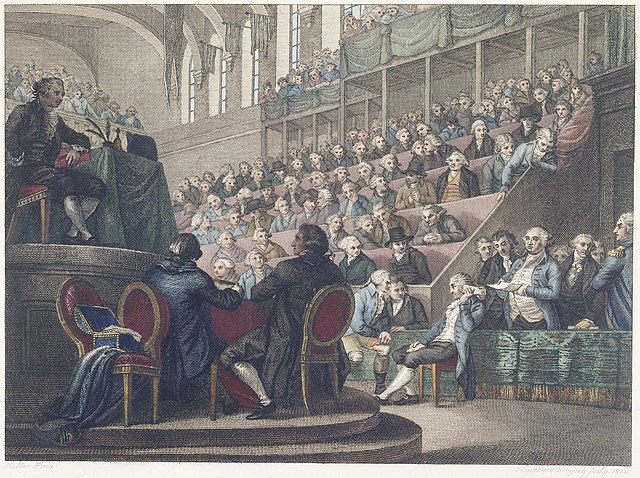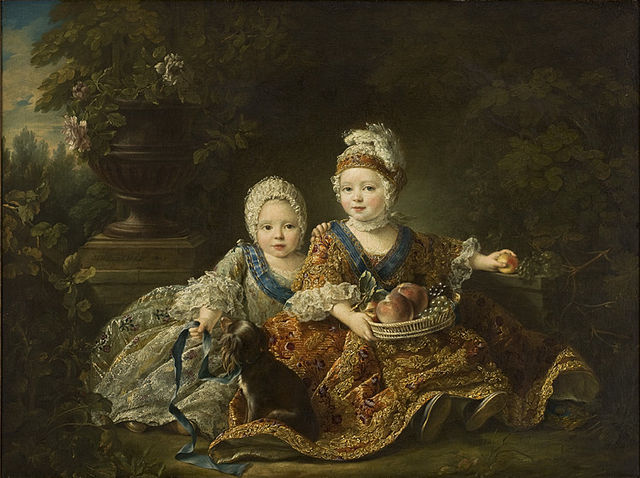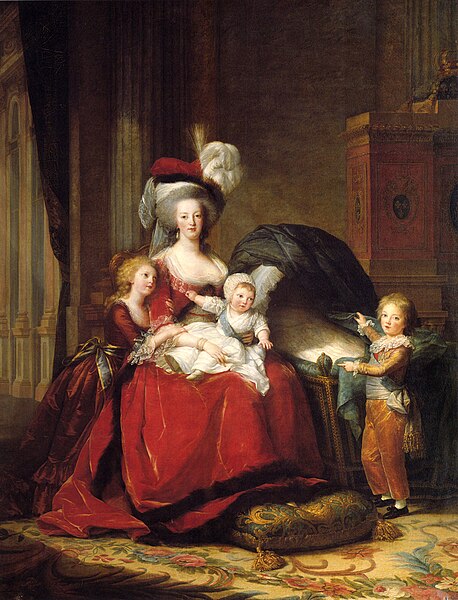Louis XVI, former King of France since the abolition of the monarchy, was publicly executed on 21 January 1793 during the French Revolution at the Place de la Révolution in Paris. At his trial four days prior, the National Convention had convicted the former king of high treason in a near-unanimous vote; while no one voted "not guilty", several deputies abstained. Ultimately, they condemned him to death by a simple majority. The execution by guillotine was performed by Charles-Henri Sanson, then High Executioner of the French First Republic and previously royal executioner under Louis.
"Day of 21 January 1793 the death of Louis Capet on the Place de la Révolution" – French engraving (1794).
Louis stands trial before the convention, as Robespierre watches from the first row. Engraving by Reinier Vinkeles
The death of Louis XVI, king of France, from an English engraving, published 1798.
The execution depicted on a Portuguese plate (Museu Nacional de Arte Antiga)
Louis XVI was the last king of France before the fall of the monarchy during the French Revolution.
Portrait, 1779
The young Duke of Berry (right) with his younger brother, the Count of Provence (by François-Hubert Drouais, 1757)
The Duke of Berry as a young boy (portrait artributed to Pierre Jouffroy)
Marie Antoinette, Queen of France and wife of Louis-Auguste with their three eldest children, Marie Thérèse, Louis-Charles and Louis-Joseph (by Élisabeth Vigée-Lebrun, 1787)








